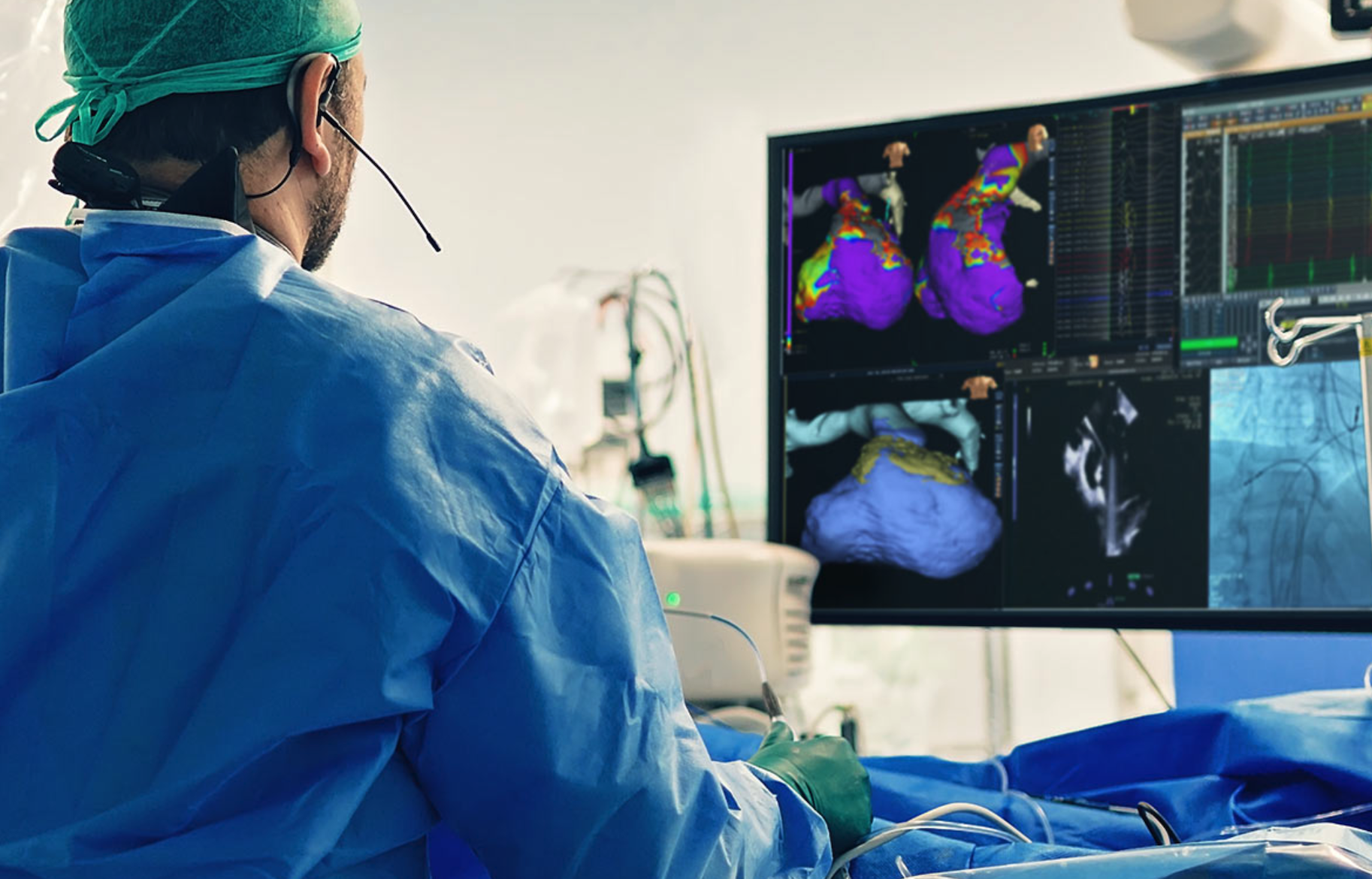
1.7 million people died in 2020 as a result of cardiovascular disease, the leading cause of death worldwide ahead of cancer (1.2 million deaths) and COVID-19 (439,000 deaths). In France, cardiovascular disease is the second most common cause of death after cancer, leading to 140,000 deaths per year, but it is the most common cause of death in women of all ages and in the elderly. It is also a major cause of illness and premature death. As many as 50,000 people experience a sudden cardiac arrest each year, roughly 5% of those surviving.
Catheter ablation remains the most widely used procedure for preventing and treating arrhythmia, which is by far the most common cardiovascular disease. But the difficulty of identifying target areas for treatment makes this a highly complicated procedure, as Maxime Sermesant explains: “When cardiologists insert a catheter they don't know where they have to go. They can spend several hours trying to work out what areas are responsible for the condition before then cauterising them.”
From research results to the startup inHEART
Since 2011 project teams from the Côte d'Azur University Inria centre have been working closely with CHU de Bordeaux on the use of imaging for heart procedures, including through Liryc, one of six university hospital institutes set up across the country as part of the French government’s future investment programme, the aim being to boost medical research and innovation.
Initially, our role was to help the hospital to develop tools with the capacity to extract information from medical imaging. This would make it easier for doctors to work out where to go and identify problem areas using a 3D representation.
Maxime Sermesant
Four years later, in 2015, the solution began to prove its worth, attracting interest from doctors across the world. The technology was then made available within a university research network (the MUSIC network), which involved a number of clinical sites uploading images onto a secure server and being sent 3D models in return, which they could then display during procedures. But the success of the project exceeded the expectations of the scientists behind it. “We were being sent more and more cases, and it was becoming too much for us as an academic institute to process. That wasn’t our role”, explains Maxime Sermesant.
In 2017 the decision was taken to launch inHEART, a spin-off from Liryc and Inria, the aim of which would be to give cardiologists a personalised, virtual model of the hearts of their patients suffering from heart rhythm disorders, using CT and MRI images.
The startup, which received CE regulatory approval in May 2019 and FDA authorisation in 2022, also raised 3.7 million euros from Elaia and the SATT (société d’accélération du transfert de technologie - technology transfer acceleration company) Aquitaine Science Transfert in 2020 as it sought to accelerate its commercial strategy. It is now faced with a significant challenge: transforming its academic tools into genuine clinical products, used by and within hospitals for catheter ablation of ventricular tachycardia.
“Hospitals need quantitative data on the usefulness and efficacy of the solution, in terms of time and money. Getting this data means carrying out clinical trials, which are very expensive, making them hard for a startup to finance”, explains Maxime Sermesant.
inEurHeart, an EU consortium to take things to the next level
And so inEurHeart was submitted to EIT Health (an EU body which finances projects dealing with digital health), the aim being to demonstrate the efficacy of these digital tools during heart procedures. Launched in January 2022, the project is set to run for three years and will be centred around three main components:
- One technological component, the aim of which is to prepare future products from the startup inHEART by improving AI and simulation.
- One clinical component, involving a clinical study carried out on 112 patients in Europe. This will make it possible to compare a standard procedure with a procedure performed using inHEART tools. The aim is to evaluate the benefits of the solution developed by inHEART, particularly in terms of time-saving and efficiency.
- One medico-economic component, working with Erasmus University Rotterdam, the aim of which will be to carry out an extensive “cost-efficiency” study of inHEART’s technology. This way hospital decision makers will be able to assess the budgetary impact of inHEART compared to traditional catheter ablation.
The goal for this project is to prepare new products for inHEART and to collect reliable data to present to hospitals and decision-makers in order to accelerate integration of our solution in hospitals.
Maxime Sermesant
To enable it to meet its aims, the six-partner, multidisciplinary EU consortium has been granted three million euros’ worth of funding from the EU via EIT Health. The long-term objective for inEurHeart is to boost the efficiency of hospitals and health resources, enabling them to treat more patients at both specialist and non-specialist centres.